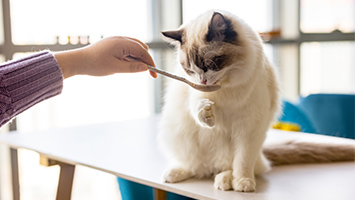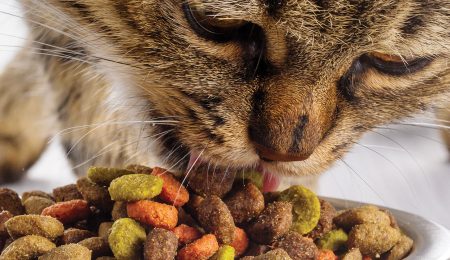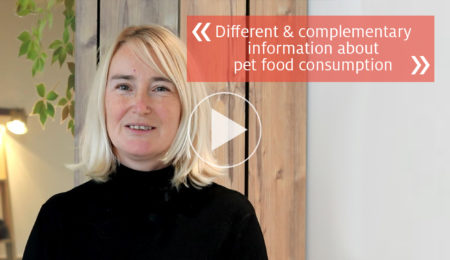Indeed, making sure the pet will eat it is at the heart of recipe development. It’s no surprise that palatability is critical to the success of a product launch. But palatability is multifaceted, and from the simple question above, many others emerge. What do dogs prefer? How do cats eat? What do owners like?
To answer these questions, you need to adopt a holistic approach to palatability that links the animal, the product and the owner.

1- Know the animal

Palatability can be defined as the capacity of a food or an ingredient to stimulate the appetite of cats or dogs, to make the pet want to eat the food, and to satisfy him as he eats. When it comes to palatability performance, everything starts with the animal. To develop foods that please cats and dogs, you need to know the animals by heart. It’s only with a deep understanding of the sensorial, physiological and behavioral specificities of cats and dogs that you can design products to satisfy their appetite.
Like humans, pets have their own feeding behaviors. They express different preferences, which can be innate or built from a lifetime of feeding experiences. Why can dogs detect the five tastes but cats can’t sense sweet? Put the blame on genetics! Their individual sensory equipment makes the two species respond differently to the numerous aromas and tastes a food can bring.
From sensometry to molecular biology, from ethology to physiology, a full research approach of animal attitude toward meals can bring to light the palatability drivers and the sensory and physico-chemical attributes that a pet food needs to offer cats and dogs a taste of paradise.
2- Master the matrix

Mealtime is a complex sensorial cascade, and pets’ feeding experiences are directly linked with numerous stimuli produced by food. Indeed, each tasting step involves key sensorial attributes of the food that affect palatability and with it animal feeding behavior.
If you want to become the high priest of palatability, the key is to ensure that the attributes of your pet food match animal expectations and desires. And in that quest, palatants are your best friends. Created through a combination of technology and expertise, commonly used in top coating, they are specifically designed to gather the aromas and taste compounds that cats or dogs crave.
But it takes two to please Charlie, and even the best palatants can’t work miracles without the support of a good matrix. Indeed, overall palatability performance of pet food results from the synergy between palatants and matrix. This latter – a kibble, a treat or a wet pet food – has its own characteristics that strongly affect performance. Quality of ingredients, moisture, density or texture, the mastery of meaningful physicochemical attributes of the matrix, combined with a deep understanding of palatability drivers, all allow you to improve the performance of each formula and please every animal.
3- Satisfy the owner

But palatability does not only center on pet preferences. The rising pet parenting trend, with pets considered as full-fledged family members, requires market players to also consider pet owner conceptions of pet food palatability performance.
Seeing a pet enjoy a meal is a moment of grace for pet parents. To ensure pet food success, manufacturers must not only satisfy pet appetites, they also need this satisfaction to be shared and perceptible by the owner.
What does that mean concretely? This is quite simple: pet parents only believe what they see. If they don’t perceive that their animal loves the food, they will simply not repurchase it. Of course, the quantity of food consumed is the first indicator of palatabilty for the owner. But beyond that, food should induce in a pet meaningful positive behaviors that the owner considers a sign of enjoyment. Does Brutus rush to the bowl? Does Kitty take a nap after the meal? Plenty of criteria influence owner perception of food palatability performance. And since pets don’t talk, you must trust their parents to know what they like.
But as devoted as parents can be to their animals, they remain human beings. The icing on the cake is when your pet food also stimulates pet parents’ senses and emotions. When owners open your kibble bag and are struck by that unique grandma’s-roast-chicken smell that everyone loves so much, then you’re on the right track to success!
Take-home points
- Palatability can be enhanced with a holistic approach of animal specificities, product attributes and owner expectations.
- Understanding cats and dogs sensorial, physiological and behavioral specificities is fundamental to identifying key palatability drivers.
- Pet food matrix quality significantly impacts palatability.
- Pet owner perception of animal food enjoyment is an important dimension of palatability performance.





* required fields